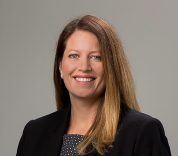
Social media is all around us and we are constantly reminded that if businesses are to survive then you have to get on board. However, regardless of the platform it takes time to manage your social media and build a following.
I don’t proclaim to be an expert in social media, but I do appreciate the importance of LinkedIn and as a consultant how important it has become in establishing credibility between you and a potential client. It is very interesting to watch the trends between when someone views your profile; they have a look at your blog and sometimes start to follow. Then a month or two later you will be approached by that same person with a new opportunity. This really highlights to me the value in ensuring you take the time to set up and maintain a profile on LinkedIn, particularly if you are a consultant.
What people don’t often realise is that with LinkedIn it is not about who you are linked to, but who your contacts are linked to. The majority of people on LinkedIn are essentially ‘at the top of the food chain’ and the average user earns more than $100k, so they are also the decision makers you want to meet!
What I really like about LinkedIn is that you don’t have to sell services, it is all about building an online relationship and educating current clients, colleagues and of course potential clients. What many LinkedIn users fail to notice is that your profile is like real estate and you need to maximise its value. You only have .2 of a second to convey your value and get someone to read more…
Here are my top three tips that I have learnt and shared with our team to ensure you maximise your LinkedIn real estate when creating your profile:
1. Make sure you have a good photo of yourself, that makes you look like someone that a person who doesn’t know you would want to connect with
2. Your title, don’t just put your actual job title. No one cares about this. Think about your ideal customer/audience and how you can add value to them. Keep it to between 1-3 key words and ideally they should relate to the same theme or link and should relate to the services you offer and/or key outcomes (make sure you also use these same words within your professional summary so that you rank in Google)
3. The mistake most people make with their professional summary is that they make it look like their CV (99% of users do this). You need to talk about your customers and NOT about you. Think about this…..they don’t care about you (at least initially), they care about what you can do for them. So you need to show them you understand their needs, their fears, their wants and their desires.
a) Start by addressing your audience
b) Then address a pain and gain point (problem/solution)
c) Then talk about yourself including your qualifications, results, years of business etc.
We need to move our thinking from being logical, to humanising the content and making it heart based. We have to learn how to convey our message to get people to understand that there is a person at the end of this and that person is you. Use words like love, desire, passion, what you love about your industry and how it makes you feel and then finish your summary with a call to action e.g. if you would like to learn more about improving workplace culture email me….
Once you have developed your profile, LinkedIn also gives you the ability to include videos and presentations and links to other material that will also assist in building your reputation and credibility online.
To assist with building your online brand and establishing yourself as a thought leader within your chosen area of expertise, you need to educate your connections. There are several ways you can do this on LinkedIn including:
-
- Status updates (which LinkedIn favours more than anything else)
- Being a thought leader by making sure you love the post and by writing a headline (how did it make you feel? How did your business benefit? Or, be controversial. But you must write your own headline)
- Posting a minimum of three status updates per week. Remembering that some of your contacts will look regularly at their LinkedIn feed, others will not. Some connections have lots of contacts and content to scroll through, some do not. Either way, you need to post regularly
We all need to build our brands so that people want to meet us. The most powerful way to do this is through education and over time people will see you as both an expert and an educator. Not as someone who is selling something.
Make sure you take the time to connect with people you know and who you meet to continue to grow your connections online. When connecting with others, try to avoid the default message when requesting to connect, personalise it by including something you have in common. This is even more important if you are trying to connect with someone who you have never actually met.
If you are trying to identify and connect with specific people in roles within certain companies, LinkedIn also has the ability to do this within its search functionality. This can be extremely useful if you are trying to generate targeted leads to a specific audience, so I recommend you explore this further if you know exactly who your target audience is.
Another way to connect with specific individuals is by joining groups. Ensure that the groups you are joining are groups that your target audience are members of, not just something you are interested in.
But remember, LinkedIn only lets 5 people record you as spam and then they will cancel your account, so you can’t just join to anyone for no reason!
It takes time to build a reputation online, but setting up and maintaining your LinkedIn profile is just another one of those 1% activities you do that together will make a big difference to how you not only build your brand, your business and ultimately your bottom line. LinkedIn really is a great medium when used effectively and it is aligned with both me and our businesses as we are all about educating and not selling to our customers!



